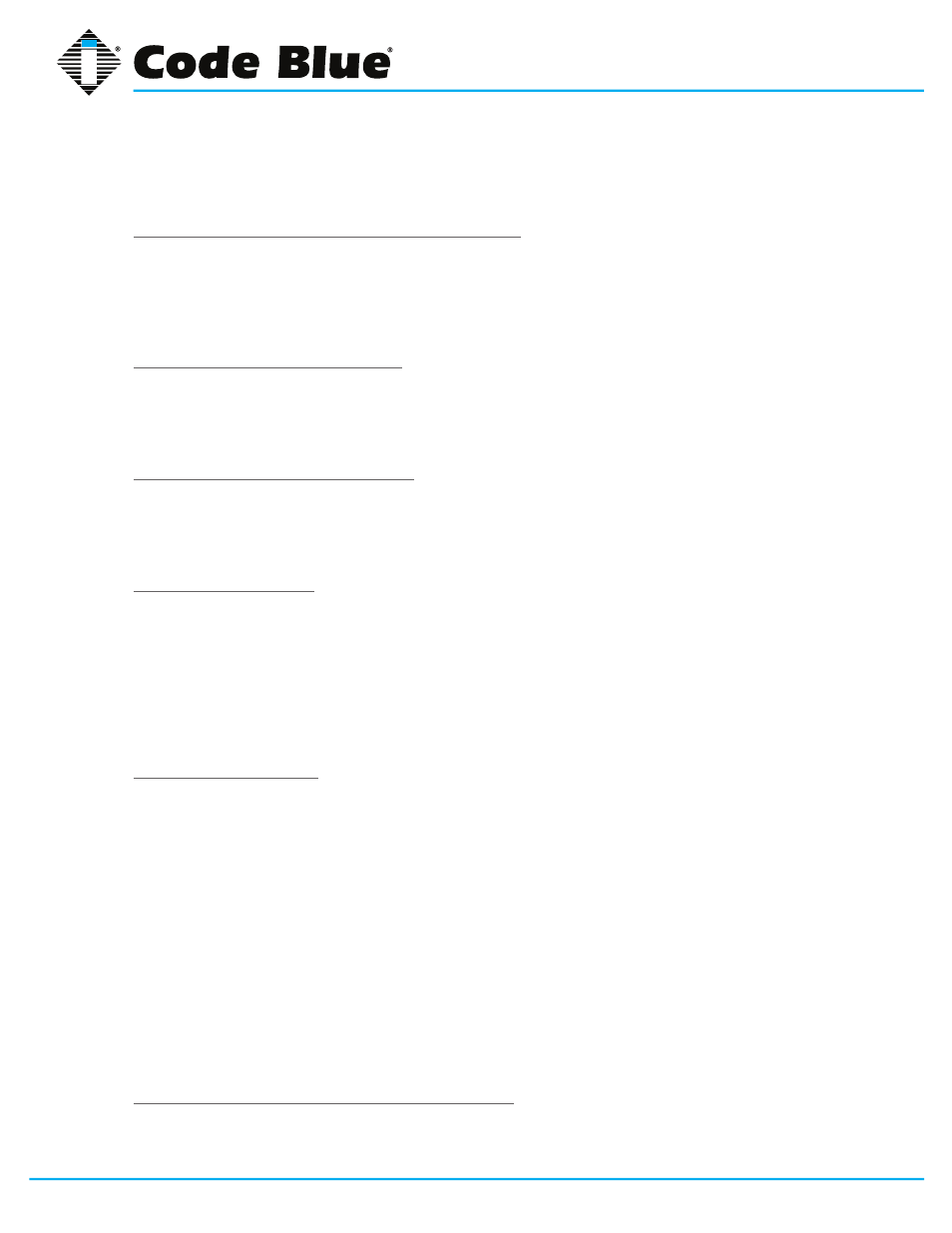Toolvox® x3, Administrator guide – Code Blue TOOLVOX X3 User Manual
Page 113

Code Blue
•
259 Hedcor Street
•
Holland, MI 49423 USA
•
800.205.7186
•
www.codeblue.com
GU-154-F
page 113 of 132
ToolVox® X3
Administrator Guide
to the append_at_myorigin directive and defaults to Yes. Because most Postfix components expect
addresses to be in the form of user@domain, it is probably not appropriate to disable this feature.
Rewrite “user@host” to “user@host.$mydomain”
This option configures simple host addresses that have the value of $mydomain appended to
them. This option correlates to the append_dot_mydomain directive and defaults to Yes. Some
administrators may find that this explicit rewrite has unexpected consequences, but it is rarely a
problem.
Rewrite “site!user” to “user@site”
Legacy UUCP networks use a different addressing format than modern SMTP systems. This option
enables Postfix to convert the old-style address to a modern address for delivery via the standard
SMTP protocol. This option configures the swap_bangpath directive and defaults to Yes.
Send mail with empty recipient to...
The specifies the destination of mail that is undeliverable. Typically, this will be bounce notifications
and other error messages. This option correlates to the empty_address_recipient directive and
defaults to MAILER-DAEMON, which by default is simply an alias to postmaster.
Address masquerading
Address masquerading is a method where hosts behind the gateway mail server may be hidden,
and all mail will appear to have originated from the gateway server. If enabled, the host and/or
subdomain portion of an address will be stripped off and only the domain specified will be included
in the address. For example, if $mydomain is specified an outgoing mail from joe@joesmachine.
swelltech.com would become [email protected], assuming the $mydomain variable contains
swelltech.com. This option correlates to the masquerade_domains directive and is disabled by
default.
Masquerade exceptions
It is possible to skip over the masquerade rules defined above for some user names. The names
to be excepted from those rules can be entered here. This option corresponds to the masquerade_
exceptions directive and no exceptions are made by default.
Mail Aliases
Mail aliases provide a means to redirect mail to local recipients. Specifically, it allows mail destined
for a number of different addresses to be delivered to a single mailbox. A common use is to direct
mail for users like a postmaster to a real person. This page is divided into two sections. The upper
section labeled Aliases Options contains the location and format of the alias files that Postfix should
use to construct its alias databases and specifies the type of database to use. The lower section
provides a list of all configured aliases on the system and what the alias maps to.
Aliases Options
Alias databases used by the local delivery agent
This option sets the filenames that Postfix will use for local delivery alias translation. The filename